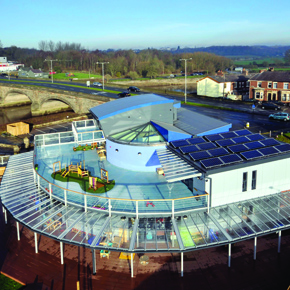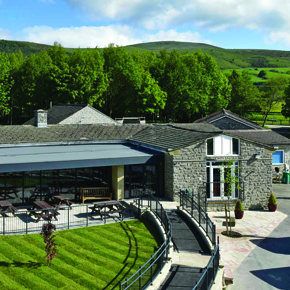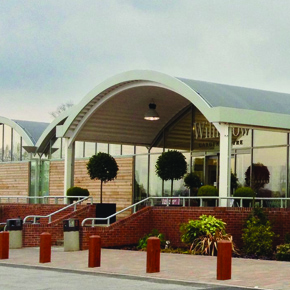
Optimise value engineering – make the most of manufacturer services
Cost versus value? The cost of a project is not just the figure at the bottom of the quote. It extends to the efficiency – and quality – of the execution. Simon Hancock, technical manager at Protan UK considers true value engineering on a roofing project…
Value engineering is a phrase on everyone’s lips at the moment, but too often mis-used. For too many, it means cutting costs to the bone, basing decisions purely on the bottom line and driving that down as low as possible.
True value engineering is about taking the wider view – looking at materials and processes to see if a more cost-effective solution exists to achieve the same objectives. It is not about achieving lower objectives.
Cheaper is not necessarily best value. Increasingly, disputes are arising between client and contractor on D&B projects because the original specification is downgraded and value engineering held up as the reason for the change.
The truth is, it was changed for material cost. However, the specification was written for a reason beyond cost. It was written that way to meet certain performance criteria.
With some commodities, there is little to choose between one and the other but with most materials that have a degree of technology inbuilt, there is a difference; it is rare one is truly comparing like with like.
An accepted result accelerator in value engineering is to use – and pay for – expert advice. Specifiers cannot be expected to know every nuance of every product; it is up to the manufacturer to help. More often than not it isn’t necessary to pay for that advice.
Most manufacturers have technical departments and will advise on the most appropriate material and solution for each project. It is in all our interests to deliver genuine value: ripping someone off, or downgrading, loses future custom and creates a bad reputation in the marketplace.
A good technical department will work in partnership with the contractor to come up with the best solution. It will cost/plan-up according to the brief but should propose alternatives that would add value, not cost, to the project.
Bear in mind there may be a larger capital cost but that would be offset by savings achieved by reduction or elimination of material wastage, remedials, better performance so reduced RMI – it is about maximising value.
Surely it is logical to utilise this expertise at the outset, when project planning, at the design stage? There may be an alternative solution that may require a slightly different build process that will yield a more cost-effective – and better – end result?
For example, on a large roof without any severe wind loadings, convention would dictate standard overlap membrane. However, what about going down the prefabricated route? The same membrane specification, prefabricated, could cut on-site welding by up to 70% and material by 10%.
That reduction delivers corresponding savings on labour. As the welding is undertaken in a factory-controlled environment, any vagaries of bond quality from dirt on site, the weather, or workmanship, are eliminated, giving a better quality, consistent bond along seams.
Wastage is minimised, with all its associated issues and costs of removal and disposal, yet prefabricated membrane costs no more per m2 than conventional standard overlap. What if the roof/building is in a particularly exposed location? On a large roof, traditionally one would opt for an adhered system but is that the best option?
To pick up on another of the key accelerators: be creative. A vacuum roof may be more efficient in the long term. It would ensure that the membrane would stay put even in the extreme winds to which we have been subjected over the past couple of winters. (Wind uplift pressure at the corners is 2.5 times that in the field, or centre, of the roof; SPRA’s Design Guide advises to allow a safety factor of 2 (ie 200%) over the wind loading set under BS 8217:2005 of 2.4kN/m2 (125mph).
During the storms of 2013, the highest wind speed recorded by the Met Office was 142mph (123kt) – well outside the limit for the roof field area, let alone the corners).
As I said earlier, specifiers cannot be expected to know such fine detail but manufacturers do – and should advise accordingly. However, they can only so do if their expertise is used at the outset of the project and a robust NBS J42 specification is prepared. Only then can true value engineering be attained and delivered.
Latest news

21st February 2025
ASSA ABLOY EMEIA: Save valuable time and money with a seamless switch to programmable digital keys
In 2025, access management can be a whole lot easier. By making access part of their digital processes, businesses can put time-consuming key management and the cost of changing the locks firmly behind them. Making this switch is a lot easier than many people think, as ASSA ABLOY explains here…
Posted in Access Control & Door Entry Systems, Architectural Ironmongery, Articles, Building Industry News, Building Products & Structures, Building Services, Doors, Facility Management & Building Services, Health & Safety, Information Technology, Innovations & New Products, Retrofit & Renovation, Security and Fire Protection
21st February 2025
Showersave supports industry leaders in addressing Part L and Part G regulations
Showersave has sponsored and participated in a recent Building Insights LIVE roundtable on ‘Water & Energy Saving Innovations in New Build Housing’.
Posted in Articles, Bathrooms & Toilets, Bathrooms, Bedrooms & Washrooms, Building Associations & Institutes, Building Industry Events, Building Industry News, Building Products & Structures, Building Regulations & Accreditations, Building Services, Exhibitions and Conferences, Interiors, Pipes & Fittings, Plumbing, Retrofit & Renovation, Sustainability & Energy Efficiency
21st February 2025
GEZE: The importance of Specifying High Quality Door Closers on Fire Doors
Andy Howland, Sales & Marketing Director at GEZE UK, discusses why specifying high quality door closers on fire doors is important…
Posted in Access Control & Door Entry Systems, Accessibility, Architectural Ironmongery, Articles, Building Industry News, Building Products & Structures, Building Regulations & Accreditations, Building Services, Doors, Facility Management & Building Services, Health & Safety, Posts, Restoration & Refurbishment, Retrofit & Renovation, Security and Fire Protection
21st February 2025
Insight Data achieves ISO9001 recertification with zero non-conformities
Leading industry data specialist, Insight Data, has successfully achieved the prestigious recertification for ISO9001 with zero non-conformities for the fourth consecutive year.
Posted in Articles, Building Industry News, Building Regulations & Accreditations, Building Services, Information Technology, Research & Materials Testing
 Sign up:
Sign up: